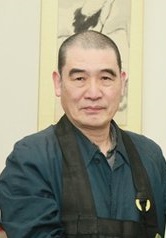ZEN MESTEREK ZEN MASTERS
« Zen főoldal
« vissza a Terebess Online nyitólapjára

石井修道 Ishii Shūdō (1943–)
![]()
https://ja.wikipedia.org/wiki/%E7%9F%B3%E4%BA%95%E4%BF%AE%E9%81%93
PDF: Ishii Shūdō's Contributions to Dōgen Studies: Examining Chinese Influences on the Kana and Kanbun Texts
by Steven Heine
Japanese Journal of Religious Studies 41/2: 387–404 © 2014 Nanzan Institute for Religion and Culture
https://nirc.nanzan-u.ac.jp/nfile/4344
PDF: The Wu-men kuan (J. Mumonkan):
The Formation, Propagation, and Characteristics of a Classic Zen Koan Text
by Ishii Shūdō
Translated by Albert Welter
in: The Zen Canon: Understanding the Classic Texts (2004), Chapter 7
PDF: Kung-an Ch'an and the Tsung-men t'ung-yao chi [宗門統要集 Zongmen tongyao ji]
by Ishii Shūdō
Translated by Albert Welter
in: The Kōan: Texts and Contexts in Zen Buddhism, ed. Steven Heine and Dale S. Wright (New York, 2000), Chapter 4, pp. 110–136.
PDF: Zen and Zen Buddhism: An Overview
by Shudo Ishii
Translated and edited by Akihiko Masuda and Kayla Sargent
in: Handbook of Zen, Mindfulness, and Behavioral Health, © Springer International Publishing AG 2017, pp 17-27.
PDF: Keizan Jōkin and His Thought
by Shūdō Ishii
In: Dao Companions to Chinese Philosophy, Volume 8. 2019, Pages 407-413.
Dōgen Zen and Song Dynasty China
by Ishii Shūdō
Translated by Albert Welter
In: Dōgen: Textual and Historical Studies, ed. Steven Heine and Dale S. Wright (New York, 2012), Chapter 6
This chapter explores the relationship between Dōgen's thought and that of leading Song Chan thinkers of the Caodong (Sōtō) and Linji (Rinzai) lineages, particularly the intense rivalry between the approaches of “silent illumination” and “introspecting the kōan.”. When considering the concept of silent illumination, Chan refers to the Chan style of Hongzhi, a fellow disciple with Zhenxie of Danxia and a member of the same Caodong order as Dōgen's teacher, Rujing. Although not necessarily aligning himself with this view, it is clear that the style Dōgen disagreed with most strongly was introspecting the kōan Zen, represented by the illustrious Linji master Dahui (1089–1163), whom Dōgen both praised and excoriated in various writings. The chapter addresses the following questions that are critical to Dōgen studies: What kind of attributes characterized the paths of silent illumination and introspecting-the-kōan during the Song Dynasty? What connection does Dōgen Zen, which resulted from his importation of Song Chan to Kamakura Japan, have with the various Song schools and approaches? In short, it considers the characteristics of Dōgen Zen against the currents of Chinese Chan history and ideology in order to understand and explicates the influences Dōgen received, as well as the unique features of religious practice he formulated and promulgated.